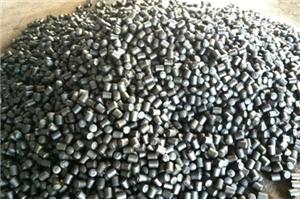-
19-11-2025
From Zhangqiu to the world! Haoyang Forging's B2/B3 alloy steel balls increase grinding efficiency by 30%
Jinan Haoyang Forging & Casting Co., Ltd. is located in Zhangqiu, Jinan, the "Iron Smelting Capital". It has been dedicated to the research and production of forged steel balls for twelve years. The company has a complete production line and advanced equipment. Its main products are B2/B3 material steel balls with a hardness of 55-67 HRC, a breakage rate of less than 1%, and a full range of diameters from Φ20 to Φ150mm. The products have excellent wear resistance and are widely used in mining, cement, power and other industries, with sales reaching overseas markets. The company has obtained ISO9001 certification. With high-quality products and services, it helps customers reduce costs and create value.
-
01-08-2025
Focus on the research and development of high-end forged balls, and build an international brand for the export of wear-resistant steel balls.
I. Focus on the research and development of wear-resistant steel balls: Build product barriers through technological innovation 1. Concentrate on material science and process optimization The core competitiveness of wear-resistant steel balls lies in their wear resistance, toughness, and cost-effectiveness. This requires a dual-driven research approach, combining material formulation and production processes. Material Research: Based on the specific operating conditions of different application scenarios (such as mines, cement, and power coal mills), develop customized material systems. For instance, by adjusting the proportions of alloy elements such as chromium, manganese, and molybdenum, optimize the metallographic structure (such as a martensite + bainite composite structure), balance hardness (HRC 55-65) with impact toughness (≥12J/cm²), and address the pain points of traditional steel balls being "hard but brittle" or "having good toughness but poor wear resistance". Process Innovation: Introduce advanced processes such as centrifugal casting, integrated forging + heat treatment, and isothermal quenching to enhance the density and uniformity of steel balls. At the same time, explore intelligent production technologies (such as AI-controlled quenching temperature and 3D-printed molds) to shorten the research and development cycle and reduce trial-and-error costs. 2. Establish a collaborative innovation mechanism involving industry, academia, and research institutions Collaborate with material colleges of universities such as Shandong University and Jinan University to jointly establish the "Wear-resistant Materials Joint Laboratory", focusing on fundamental research on the fatigue life and wear mechanism of wear-resistant steel balls, and quickly converting laboratory results into mass production technologies. In response to export market demands (such as the requirements for environmental protection and low noise in European and American mines), jointly develop green products such as low-chromium alloy steel balls and recyclable steel balls with overseas research institutions, and lay out international technical standards in advance.




